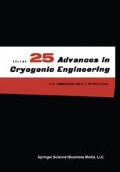Abstract
One of the main components of the detector experiment CELLO in the e+e- storage ring PETRA at DESY/Hamburg is the superconducting magnet system. The magnets have been developed as a joint project by CEN/Saclay and Kernforschungszentrum Karlsruhe. CEN has built the thin-walled main solenoid with a length of 3.5 m and a winding diameter of 1.7 m creating a magnetic field of 1.5 T in the center [1]. Two magnetically identical solenoids, located symmetrical to the main coil, must be positioned with a magnetic field opposite to the central field to cancel the integral field effect on the orbiting particle beams. This compensating solenoid system, including its supporting cryogenic system, has been designed and constructed by the Kernforschungszentrum Karlsruhe. The main coil was constructed with a wall thickness of ≤ λ/2 (equivalent to 45 mm of aluminum); this requirement was imposed by the radiation length λ of the generated particles. The compensating coils, on the other hand, were designed and built by conventional techniques for superconducting magnets. The solenoids within their cryostats are to be mounted in movable iron yoke doors surrounded by muon chambers and a liquid argon end cap calorimeter as shown in Fig. 1. The outer geometry and the required warm bore parameters determine the dimensions of the cryostats, i.e., a length of 1.10 m and an outer and inner diameter of the horizontal part of 0.8 and 0.4 m, respectively.
Access this chapter
Tax calculation will be finalised at checkout
Purchases are for personal use only
Preview
Unable to display preview. Download preview PDF.
References
H. Desportes, in Proc. 6th Intern. Conference on Magnet Technology, ALFA, Bratislava, Czechoslovakia (1978), p. 474.
P. Turowski, M. Scherer, and W. Goll, in Proc. 5th Intern. Conference on Magnet Technology, Rome, Italy (1976), p. 541.
N. Fessler-Wilhelmi and K. P. Jüngst, “Ultrasonic Welded Multifilament Superconductors” Kernforschungszentrum Karlsruhe unpublished report.
J. M. Lock, Cryogenics 9(6): 438 (1969).
W. Lehmann and G. Zahn, in Proc. 7th Intern. Cryogenic Engineering Conference, IPC Science & Technology Press, Guildford, England (1979), p. 569.
Author information
Authors and Affiliations
Editor information
Editors and Affiliations
Rights and permissions
Copyright information
© 1980 Springer Science+Business Media New York
About this chapter
Cite this chapter
Barth, W., Fessler-Wilhelmi, N., Lehmann, W., Turowski, P. (1980). Superconducting Compensating Solenoids for the Cello Detector Experiment at Petra. In: Timmerhaus, K.D., Snyder, H.A. (eds) Advances in Cryogenic Engineering. Advances in Cryogenic Engineering, vol 35 A. Springer, Boston, MA. https://doi.org/10.1007/978-1-4613-9856-1_19
Download citation
DOI: https://doi.org/10.1007/978-1-4613-9856-1_19
Publisher Name: Springer, Boston, MA
Print ISBN: 978-1-4613-9858-5
Online ISBN: 978-1-4613-9856-1
eBook Packages: Springer Book Archive

